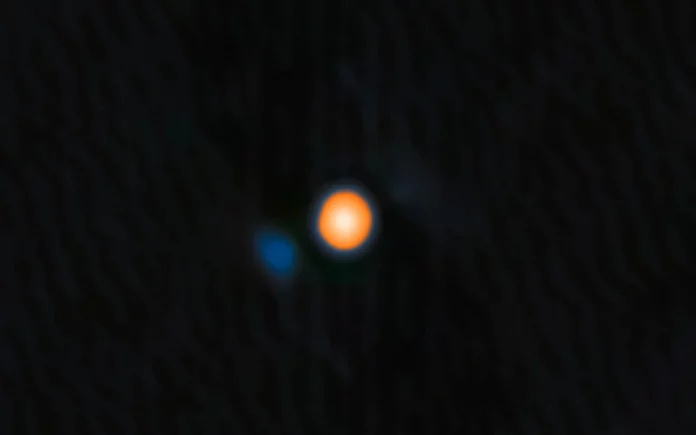In 2024, astronomers suggested that Betelgeuse might have a stellar “friend”. If this hypothetical companion existed, it would help answer some questions about the red supergiant’s strange glow patterns. As it turned out, these suspicions were correct.
After numerous false signals and empty search results, astronomers from NASA‘s Ames Research Center confirmed that Betelgeuse does indeed have a tiny companion star. The young star, whose mass is about 1.5 times that of the Sun, is likely to have some undesirable effect on the gravitational field of the larger star and the cosmic dust flying in its vicinity. The interaction between the two stars causes Betelgeuse – unlike most stars of its type – to experience an additional, long period of periodic eclipse approximately every six years.
“In the work that predicted Betelgeuse’s companion, it was thought that no one would likely ever be able to photograph it,” said Steve Howell, the astronomer who led the team that discovered the star, in a statement. “This now opens the door to other observations of a similar nature.”
To make the discovery, astronomers used the Gemini North telescope in Hawaii, employing a technique known as speckle imaging, which uses very short exposure times to eliminate distortions in space images caused by the Earth’s atmosphere. This allowed the researchers to directly capture the companion star at a high enough resolution to determine some key characteristics of the newly discovered star, such as its mass and temperature.
The most interesting thing about BetelBuddy – as the researchers who predicted its existence called it in a previous interview with Gizmodo – is that it was probably born around the same time as Betelgeuse. To put this in perspective, Betelgeuse, a red supergiant, is nearing the end of its stellar life, and astronomers predict that it could explode in a fiery supernova within a decade or so. But the newly discovered companion star is so young that hydrogen hasn’t even begun to ignite in its core, meaning it’s still in the early stages of stellar evolution. This is likely because Betelgeuse, which has a mass 10-20 times that of our Sun, has a much shorter lifespan than its lighter friend.
Given Betelgeuse’s relative proximity to Earth, astronomers have studied it more closely than most other stars for centuries. From their observations, astronomers have found that the star’s brightness changes with a cycle of about 400 days, and the secondary period lasts about six years. Variable stars are relatively common, but astronomers have long struggled to explain why Betelgeuse has a long eclipse period.
This is different from the “Great Eclipse” of Betelgeuse in 2019-2020, which scientists suspect is the result of a large dust cloud being released, which subsequently obscured its brightness.
Thanks to the new discovery, astronomers now have a good answer to the mystery behind the long-term darkening and brightening of the huge Betelgeuse star. However, they expect Betelgeuse’s intense gravitational pull to consume the young star within the next 10,000 years.
Fortunately, this won’t be the first or last time we see Betelgeuse alive. Astronomers expect the young star to pass within the range of our telescopes in November 2027, when it will fly the farthest from Betelgeuse.









